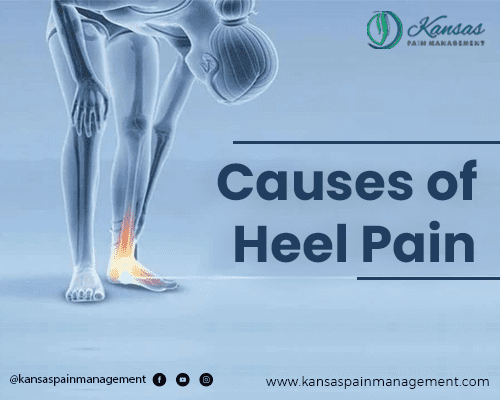Heel pain is a common condition that may significantly impact an individual’s mobility and quality of life. Heel pain can be painful and limit one’s ability to engage in daily activities, whether it is acute or constant pain. Understanding the causes of heel pain is essential for effectively managing and treating it. In this article, we will discuss some common causes of heel pain:
Plantar Fasciitis:
Plantar fasciitis is a common cause of heel pain. It occurs when plantar fascia, a thick band of tissue that connects the heel bone to the toes, becomes inflamed or irritated. Common risk factors for plantar fasciitis include overuse, excessive physical activity, improper footwear, obesity, and biomechanical abnormalities like flat feet or high arches.
Achilles Tendinitis:
The Achilles tendon, located in the back of the heel, can become inflamed and irritated, resulting in heel pain. Achilles tendinitis is often a result of repetitive strain, such as excessive running or jumping activities. Poor stretching habits, sudden increases in physical activity, and inadequate footwear can also cause this condition.
Heel Spurs:
Heel spurs are bony outgrowths that develop on the underside of the heel bone. They are frequently associated with plantar fasciitis, however, not everyone who has heel spurs feels pain. They develop over time as a result of persistent strain on the plantar fascia, which causes calcium deposits to collect. Heel spurs can cause pain and inflammation in the heel.
Stress Fractures:
Stress fractures are minor cracks in the bones caused by overuse or repetitive stress. They typically affect athletes and people who participate in high-impact sports. While stress fractures can occur in any bone, they are most common in the heel. People who have osteoporosis or who suddenly increase their physical activities are more likely to develop stress fractures.
Bursitis:
Bursae are tiny fluid-filled sacs that are found around joints such as the heel. Bursitis can arise when these sacs become inflamed as a result of repeated tension or strain. It frequently causes heel pain, edema, and tenderness. Excessive heel pressure, such as prolonged kneeling or standing, might contribute to the development of bursitis.
Nerve Entrapment:
Nerves in the foot, such as the tibial nerve or the plantar nerves, can become compressed or entrapped, leading to heel pain. Conditions like tarsal tunnel syndrome or nerve impingement can cause discomfort that radiates to the heel area. Nerve-related heel pain is often described as a burning or shooting sensation.
Other Factors:
Apart from the conditions mentioned above, several other factors can contribute to heel pain. These include arthritis, gout, infections, obesity, improper footwear, and biomechanical issues like overpronation or over-supination. Understanding these additional factors is crucial in determining the underlying causes of heel pain.
Conclusion
It is essential to consult with your provider for an accurate diagnosis and appropriate treatment for heel pain. Treatment may include rest, stretching exercises, physical therapy, orthotic devices, medication, or, in severe cases, surgery.
Read Our Article: A Complete Overview of Treatment of Chronic Back Pain

